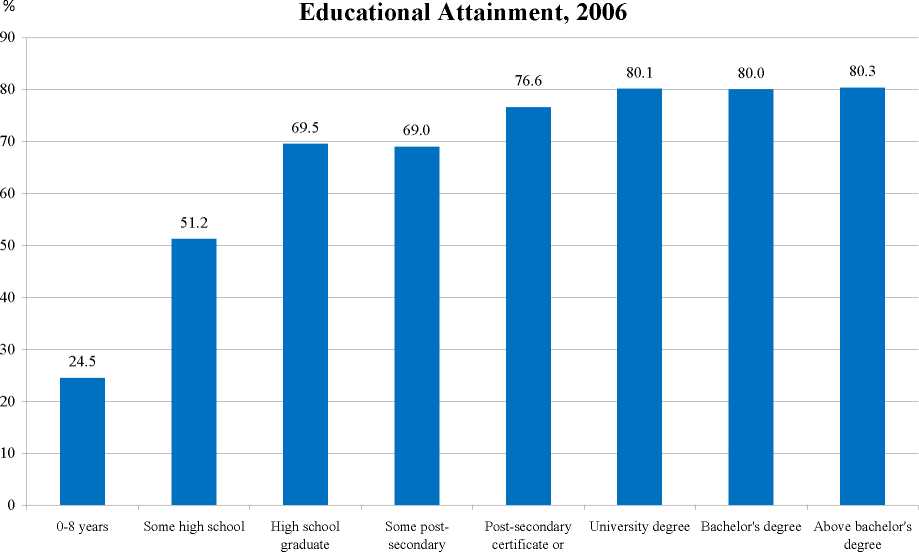23
holds a significant advantage: 69.5 per cent of persons whose highest level of education
attainment was high school graduation participated in the labour force. The participation rate for
persons with a post-secondary certificate was 76.6 per cent, well above that of persons with only
high school certification. But for persons not completing their post-secondary education, the
participation rate was only 69.0 per cent. Not surprisingly, persons who completed university
education enjoyed a higher participation rate: 80.1 per cent. This number was almost the same
for bachelor‘s degree holders (80.0 per cent) than for holders of advanced degrees (80.3 per
cent). As was the case for unemployment, the big divide is between those who did not finish
high school and those who did. There was a 32.9 percentage points gap between the participation
rates of the two groups.
Chart 2: Participation Rate in Canada, by Highest Level of

diploma
Source: Labour Force Survey
iii. Employment Rates
The employment rate is a function of both the participation and unemployment rates. As
a result, it is no surprise that the employment rate is significantly higher for people who
completed some high school compared to none at all, and is even higher for people who actually
completed high school (Chart 3). Persons with 0 to 8 years of education have a 21.5 per cent
employment rate. This rate rises to 44.9 per cent for persons with some high school and to 65.2
per cent for persons whose highest level of educational attainment is high school graduation.
Again, continuing to post-secondary education does not seem to bring any advantage if one does
not complete, as the employment rate for persons with some post-secondary education is only
More intriguing information
1. Visual Artists Between Cultural Demand and Economic Subsistence. Empirical Findings From Berlin.2. Discourse Patterns in First Language Use at Hcme and Second Language Learning at School: an Ethnographic Approach
3. The name is absent
4. FOREIGN AGRICULTURAL SERVICE PROGRAMS AND FOREIGN RELATIONS
5. The name is absent
6. Social Balance Theory
7. Spatial Aggregation and Weather Risk Management
8. A Note on Productivity Change in European Co-operative Banks: The Luenberger Indicator Approach
9. For Whom is MAI? A theoretical Perspective on Multilateral Agreements on Investments
10. The name is absent